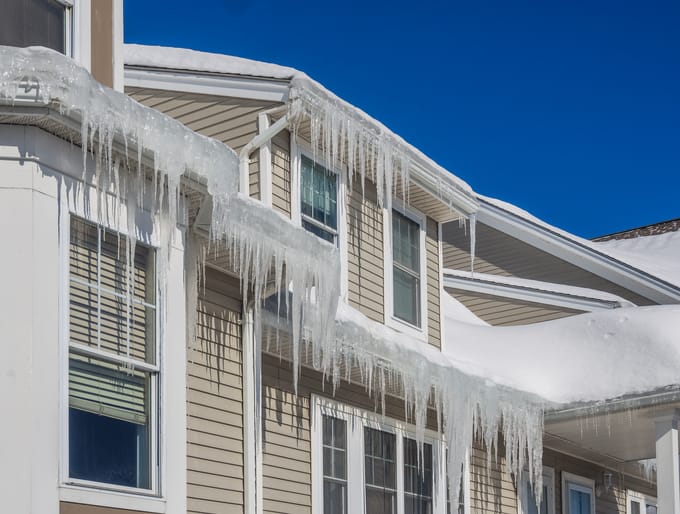When the snow melts, they form ice dams. This usually occurs when the portion of your roof is warm enough to melt the snow. This happens when the temperature of the roof is above 32 degrees F, and the edge of the roof maintains below freezing temperatures. Ideally, the attic is the primary cause of ice dams.
In most houses, warm air rises from the rooms to the attic where it warms the shingles and the wood. When snow settles on the roof, it melts and the melted water moves down to the cold edges where there is no warmth and it freezes to form a rim of ice. When the ice forms around the rim of the roof, it traps water and you have an ice dam.
To prevent ice dams from forming, you simply need to keep your roof and your attic cold. During a snowfall, you will notice a thick blanket of snow on a cold roof. Now, to avoid ice dams by keeping the roof cold, follow these steps:
Close the bypasses in the attic
In most homes, the ceiling is the primary target of heat loss due to access hatches, drywall gaps, unblocked walls, light-fixture cracks, chimneys, plumbing pipes, and other penetrations in the ceiling.
It can be tough to stop air leaks. You have to work hard to climb to the attic and plug caulk, foam and other materials on the leaking spaces. You might be able to access some leaks because of low roof angles; to properly fix the air leaks, you will need a lot of time during the cold weather.
When you finally manage to seal the air spaces, you will avoid the formation of ice dams. You will also save a lot of energy by reducing the bills used in heating and cooling the house.
Measure the insulation levels in your attic
Measure the attic depth while you are in it. It is recommended that if you have between 12 to 14 inches in your attic, you should use cellulose and fibreglass. But if you have less than 8 inches and you have experienced issues with ice dams before, add more cellulose or fibreglass.
It is better to use fibreglass or blown-in cellulose instead of batts that are hand-placed because they tighten around joists, rafters and other components. To do this job, hire a professional insulation removal and installation expert who will ensure that you have very few gaps.
Add soffit and roof vents
Ventilation in your attic flushes warm air from the attic and draws in cold air from outside; this works to cool the attic and finally the roof. To vent, there are roof types that make it extremely hard, especially those ceilings that have no attic and they are angled, flat roof doomers, roofs that have a skylight, and roofs that have a low slope.
It is tough to assess venting in houses that have aluminum retrofitted over soffits that are old. If you continuously have persistent ice dams in a particular area of your roof, then you might need to remove aluminum in different sections of the roof for vent checking.
Ice dams are not the primary issue. The bulk of the damage is done majorly by the leaks. If you fail to identify ice dam leakages common in ceilings or soffits or in the attic, then it is hard to get around the problem.
If your ice dam is leaking and you are not able to rake the snow from the roof, then, hire a roofing company to help you clear the snow by steaming. A steamer works like a pressure washer to melt the ice without causing any damage to the roof. If you chip the ice from the roof using an ice pick, you can easily break the shingles.

